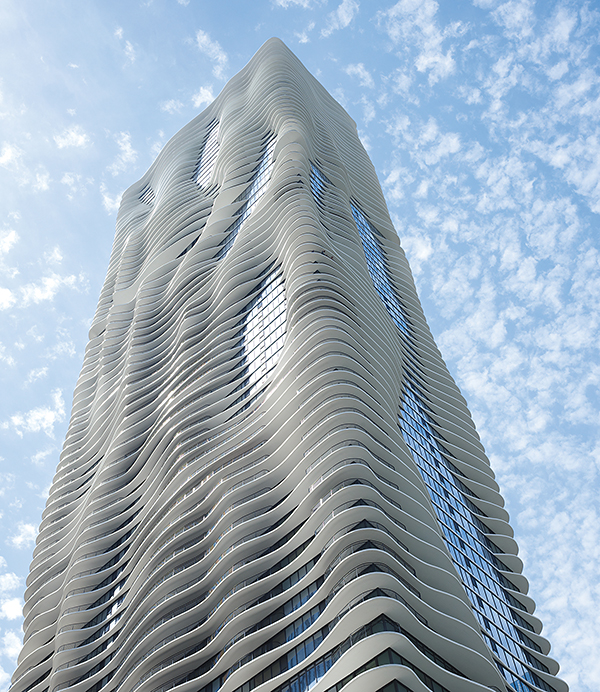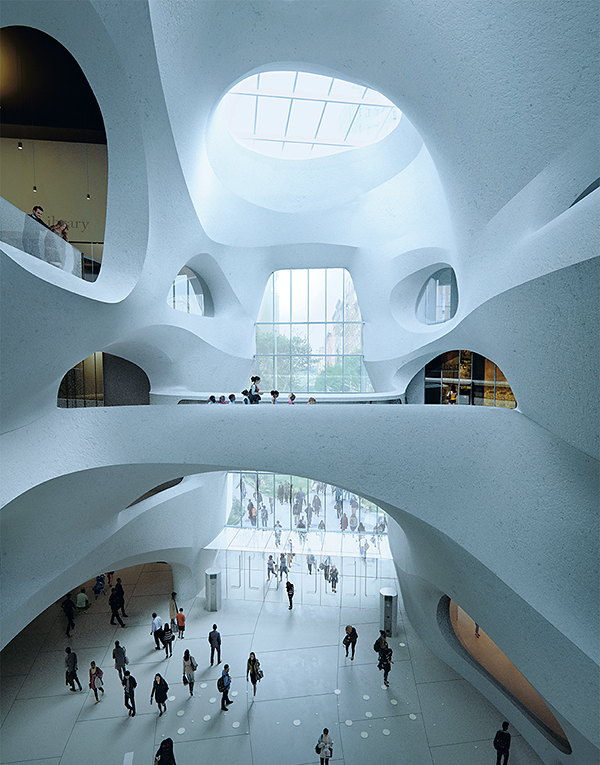Jeanne Gang
“Flow’s ever-changing visual characteristics have long fascinated artists, who have captured its whirls, eddies, and vortices in drawings, paintings, and sculpture,” Gang says. “It has also been a key subject for scientists, who continue to study the physics and biology of movement in wind, water, crowds, flocks, and swarms.”Gang’s projects are often both scientific explorations of flow and artistic expressions that make flow legible in their final architecture. “In the strata wall of a community centre for instance or the wavy slab edges of a high-rise tower, concrete’s fluidity is both aesthetic inspiration and physics rendered visible,” Gang says. “The structural vaults and bridges of a museum addition preserve the memory of concrete’s liquid state and suggest geology formed by flows of wind and water.

An essay by Jeanne Gang
“Actionable idealism” is a phrase I have often used to convey the intention of our studio’s practice. At first glance the term might seem to be an oxymoron, if it’s assumed that pursuing ideals is inherently unrealistic. But together these two words embody the dual challenge at the heart of our work: to articulate the big ideas that move us, and to find a way to methodically pursue and accomplish them using design. Above all, we want to live in a world where humans not only coexist, but also actively support one another as part of our planet’s greater network of living things. This calls on us as designers to practice an architecture that fosters interaction and connection rather than developing stand-alone objects.
To work toward this world in this way takes a relentless kind of optimism, determination, and even courage. It also demands that we engage in a range of architectural pursuits that include, but are not limited to, the design of new buildings. Among our studio’s “extra-building” activities are conceiving and developing self-initiated projects that may have no client; conducting research that is not directly related to buildings; writing essays for the purpose of sharing knowledge; taking positions and rendering opinions in various forums; and running ongoing experiments in the hopes of making specific discoveries and satisfying curiosity. There is also the serious activity of caring for older buildings – restoring or reinventing them – and working to repair and revitalize urban environments in partnership with their communities. Perhaps by understanding this wider context of our pursuits, it is easier to enter into the mindset with which we approach the core activity of Studio Gang: making architecture.

We have been very busy making architecture, in this broad sense, for the past twenty years. By focusing on buildings, we are able to see and to share the way in which the discoveries from all the other activities of the studio influence and inform what is finally made physical. Perhaps this task has particular value for Studio Gang because it has often been said that our work resists stylization. It is true that we see each of our projects on its own terms and work to understand their specificities, but there are nevertheless certain aesthetic and formal affiliations between them. Through examining these connections and articulating the intentionality embodied in each project’s design and wider story, it is possible to see more clearly the recurrent themes and distinctive traits that transcend the specific.
